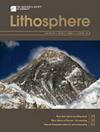数字化浅水三角洲坝指内部构造模式——来自赣江三角洲浅核、GPR和Delft3D模拟数据的启示
IF 1.7
4区 地球科学
Q3 GEOCHEMISTRY & GEOPHYSICS
引用次数: 1
摘要
指状浅水三角洲常见于现代湖泊、海湾以及克拉通含油气盆地。发育一个或多个弯曲指状砂(即沙洲指),包括高RSI型(分流河道与沙洲指的弯曲比≥1)和低RSI型(RSI < 1)。坝指由四种类型的子环境组成,即分流河道、点坝、口坝和堤防。然而,上述子环境中的内部架构仍然不清楚。本文基于中国赣江三角洲浅核和探地雷达数据的集成,结合Delft3D模拟,研究了一个数字化三角洲的内部结构。结果表明,河口坝发育多个凸起的淤泥质砂积层,其上覆于分流河道或点坝的侧面,下覆于河口坝的底部。加积层的倾角较补给河低(10°)。该倾角与下游距离呈负相关,与横向运移距离呈正指数关系。粉质褶皱沿分流河道的迁移方向密集分布。堤防发育多个水平泥质积层。与低rsi砂指相比,高rsi砂指在高倾角河口砂坝上发育大量(>3)的吸积层,在厚堤上发育大量的吸积层。本文的研究结果为克拉通数码状浅水三角洲储层的预测与开发提供了新的思路。本文章由计算机程序翻译,如有差异,请以英文原文为准。
Internal Architectural Patterns of Bar Fingers Within Digitate Shallow-Water Delta: Insights from the Shallow Core, GPR and Delft3D Simulation Data of the Ganjiang Delta, China
Digitate shallow-water deltas are commonly found in modern lakes and bays, as well as within cratonic petroliferous basins. They develop one or multiple sinuous finger-like sands (i.e., bar fingers), including high-RSI (sinuosity ratio of distributary channel and bar finger ≥1) and low-RSI (RSI < 1) types. Bar fingers consist of four types of subenvironments, that is, distributary channels, point bars, mouth bars, and levees. However, the internal architecture within the above subenvironments is still unclear. This paper documents the internal architecture of a digitate delta based on the integration of shallow-core and ground-penetrating radar data from the Ganjiang Delta, China, coupled with Delft3D simulations. Our results show that multiple convex-up muddy-silty accretion beds are developed in mouth bars, which top lap the side of the distributary channels or point bars and down lap the bottom of the mouth bar. The accretion beds have low dip angles (<2°), which is slightly higher for the upper accretion beds. Point bars, unique to the high-RSI bar finger, develop multiple inclined silty drapes, which top lap the top of the point bar. The cohesive levee and backwater effect impede the migration of the distributary channel, resulting in silty drapes with high-dip angles (can be >10°) compared with those in the supplying river. This dip angle exhibits a negative relationship with downstream distance and a positive exponential relationship with lateral migration distance. Silty drapes become dense along the migration direction of the distributary channel. The levee develops multiple horizontal muddy accretion beds. The high-RSI bar finger develops a large number (>3) of accretion beds in mouth bars with high dip angles, and a large number of accretion beds in thick levees, compared with the low-RSI bar finger. The results of this paper provide insights into the prediction and development of cratonic digitate shallow-water delta reservoirs.
求助全文
通过发布文献求助,成功后即可免费获取论文全文。
去求助
来源期刊

Lithosphere
GEOCHEMISTRY & GEOPHYSICS-GEOLOGY
CiteScore
3.80
自引率
16.70%
发文量
284
审稿时长
>12 weeks
期刊介绍:
The open access journal will have an expanded scope covering research in all areas of earth, planetary, and environmental sciences, providing a unique publishing choice for authors in the geoscience community.
 求助内容:
求助内容: 应助结果提醒方式:
应助结果提醒方式:


